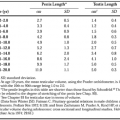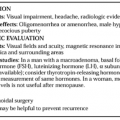DIFFERENTIAL DIAGNOSIS
Part of “CHAPTER 58 – PRIMARY HYPERPARATHYROIDISM“
The differential diagnosis of hypercalcemia is covered in Chapter 59, but several points are particularly relevant to the discussion of primary hyperparathyroidism. If previous medical records are available, the patient may be found to have had serum calcium levels at the upper limits of normal before frank hypercalcemia became evident.
LITHIUM USE
Lithium administration has been associated with hypercalcemia and an apparent hyperparathyroid state. In vitro studies suggest that lithium may alter the calcium setpoint for calcium-mediated inhibition of PTH secretion.68 Anecdotal clinical reports describe reversible hyperparathyroidism in patients treated with lithium. Confounding variables, such as diuretic therapy or renal failure, preclude definite conclusions in many of these case reports. Lithium treatment has been associated with hypercalcemia, hypermagnesemia, and reduced urinary calcium.69 A controlled study involving normal volunteers assessed lithium effects on PTH secretion. No significant difference was found in serum calcium, plasma PTH, or nephrogenous cAMP measurements after calcium infusion in normal volunteers, off or on lithium therapy.70 These data suggest that clinically relevant lithium levels do not alter the calcium setpoint of PTH release, but evidence suggests that the setpoint for calcium may be altered short term and that PTH levels may rise over time.71 Practically, the diagnosis of primary hyperparathyroidism is on firmer grounds if lithium can be withdrawn and the patient shown to have persistent hypercalcemia over the ensuing several months.
Stay updated, free articles. Join our Telegram channel

Full access? Get Clinical Tree






